by Deepal Warakadoda, Carol Inskipp, Richard Grimmett, and Tim Inskipp
THE field guide for anyone birding on the beautiful island of Sri Lanka.
by Deepal Warakadoda, Carol Inskipp, Richard Grimmett, and Tim Inskipp
THE field guide for anyone birding on the beautiful island of Sri Lanka.
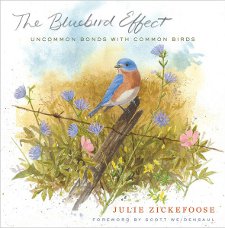 The Bluebird Effect: Uncommon Bonds with Common Birds
The Bluebird Effect: Uncommon Bonds with Common Birds
by Julie Zickefoose
From Houghton Mifflin Harcourt:
Julie Zickefoose lives for the moment when a wild, free living bird that she has raised or rehabilitated comes back to visit her; their eyes meet and they share a spark of understanding. Her reward for the grueling work of rescuing birds—such as feeding baby hummingbirds every twenty minutes all day long—is her empathy with them and the satisfaction of knowing the world is a birdier and more beautiful place.
The Bluebird Effect is about the change that’s set in motion by one single act, such as saving an injured bluebird—or a hummingbird, swift, or phoebe. Each of the twenty-five chapters covers a different species, and many depict an individual bird, each with its own personality, habits, and quirks. And each chapter is illustrated with Zickefoose’s stunning watercolor paintings and drawings. Not just individual tales about the trials and triumphs of raising birds, The Bluebird Effect mixes humor, natural history, and memoir to give readers an intimate story of a life lived among wild birds.
I can’t wait to start reading this beautiful book. And congratulations to Julie and Houghton Mifflin – The Bluebird Effect is featured on Oprah’s blog!
The Bluebird Effect: Uncommon Bonds with Common Birds
by Julie Zickefoose
Hardcover; 378 pages
Houghton Mifflin Harcourt; March 20, 2012
ISBN: 9780547003092
$28.00
Now you can create and submit eBird checklists from your iPhone anywhere in the world – BirdsEye BirdLog – Worldwide.
Bird book reviews. Shiny.
March 28, 2012
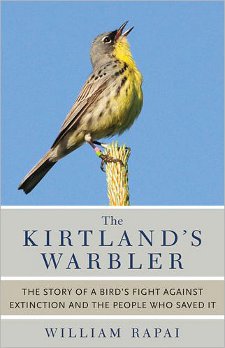 The Kirtland’s Warbler: The Story of a Bird’s Fight Against Extinction and the People Who Saved It
The Kirtland’s Warbler: The Story of a Bird’s Fight Against Extinction and the People Who Saved It
by William Rapai
From University of Michigan Press:
At a time when the world is seeing its species rapidly go extinct, the Kirtland’s warbler is not just a survivor, it’s a rock star. The Kirtland’s warbler is the rarest warbler species in North America and will always be rare because of its persnickety nesting preferences. But when the total population fell below 400 birds in the 1970s and 1980s—driven largely by a loss of habitat and the introduction of a parasite—a small group of dedicated biologists, researchers, and volunteers vowed to save the Kirtland’s warbler despite long odds. This is the story of the warbler’s survival and gradual recovery, the people and policies that kept it from extinction, and the ongoing challenges that may again jeopardize the bird’s future.
In The Kirtland’s Warbler, William Rapai explores the bird’s fascinating natural history as well as the complex and evolving relationships between the warbler, its environment, its human protectors, and state and federal policies that today threaten to eradicate decades of work done on the species’ behalf. Beginning with an account of the warbler’s discovery in the mid-nineteenth century and ornithologists’ desperate hunt for information on the elusive new species, the book goes on to examine the dramatic events that quickly led to the warbler’s precarious status and its eventual emergence as a lightning rod for controversy.
The Kirtland’s warbler is often described as a “bird of fire” for its preference for nesting in areas cleared by wildfire. But it also warrants the name for the passion it ignites in humans. Both tragic and uplifting, the story of this intriguing bird is a stirring example of how strong leadership, vision, commitment, sustained effort, and cooperation can come together to protect our natural world.
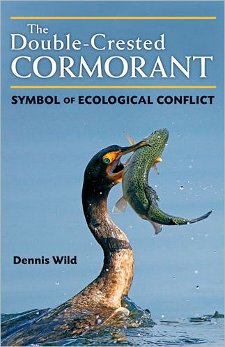 The Double-Crested Cormorant: Symbol of Ecological Conflict
The Double-Crested Cormorant: Symbol of Ecological Conflict
by Dennis Wild
Also from University of Michigan Press:
This is the story of the survival, recovery, astonishing success, and controversial status of the double-crested cormorant. After surviving near extinction driven by DDT and other contaminants from the 1940s through the early 1970s, the cormorant has made an unprecedented comeback from mere dozens to a population in the millions, bringing the bird again into direct conflict with humans. Hated for its colonial nesting behavior; the changes it brings to landscapes; and especially its competition with commercial and sports fishers, fisheries, and fish farmers throughout the Great Lakes and Mississippi Delta regions, the cormorant continues to be persecuted by various means, including the shotgun.
In The Double-Crested Cormorant, Dennis Wild brings together the biological, social, legal, and international aspects of the cormorant’s world to give a complete and balanced view of one of the Great Lakes’ and perhaps North America’s most misunderstood species. In addition to taking a detailed look at the complex natural history of the cormorant, the book explores the implications of congressional acts and international treaties, the workings and philosophies of state and federal wildlife agencies, the unrelenting efforts of aquaculture and fishing interests to “cull” cormorant numbers to “acceptable” levels, and the reactions and visions of conservation groups. Wild examines both popular preconceptions about cormorants (what kinds of fish they eat and how much) and the effectiveness of ongoing efforts to control the cormorant population. Finally, the book delves into the question of climate and terrain changes, their consequences for cormorants, the new territories to which the birds must adapt, and the conflicts this species is likely to face going forward.
Anyone interested in these species, or conservation in general, should check out these books.
The Kirtland’s Warbler: The Story of a Bird’s Fight Against Extinction and the People Who Saved It
by William Rapai
Hardcover; 216 pages
University of Michigan Press; February 8, 2012
ISBN: 978-0-472-11803-8
$24.95
The Double-Crested Cormorant: Symbol of Ecological Conflict
by Dennis Wild
Hardcover; 274 pages
University of Michigan Press; February 8, 2012
ISBN: 978-0-472-11763-5
$27.95
March 24, 2012

by Steve N. G. Howell
An incredible resource for anyone interested in identifying these seabirds.
You can now create and submit eBird checklists directly from your iPhone with BirdsEye BirdLog. This version will only work in North America – a worldwide version will be available in about a week according to BirdsEye. Here’s a video demo if you want to see how it works.
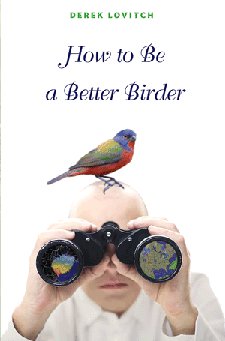 How to be a Better Birder
How to be a Better Birder
by Derek Lovitch
From the publisher (Princeton University Press):
This unique illustrated handbook provides all the essential tools you need to become a better birder. Here Derek Lovitch offers a more effective way to go about identification–he calls it the “Whole Bird and More” approach–that will enable you to identify more birds, more quickly, more of the time. He demonstrates how to use geography and an understanding of habitats, ecology, and even the weather to enrich your birding experience and help you find something out of the ordinary. Lovitch shows how to track nocturnal migrants using radar, collect data for bird conservation, discover exciting rarities, develop patch lists–and much more.
This is the ideal resource for intermediate and advanced birders. Whether you want to build a bigger list or simply learn more about birds, How to Be a Better Birder will take your birding skills to the next level.
- Explains the “Whole Bird and More” approach to bird identification
- Demonstrates how to use geography, habitats, ecology, and the weather to be a better birder
- Shows how to bird at night using radar, collect conservation data, develop patch lists–and more
- Offers essential tools for intermediate and advanced birders
I like what I’ve read so far; it covers some subjects in detail that other birding books barely mention, if at all.
How to be a Better Birder
by Derek Lovitch
Paperback; 204 pages
Princeton University Press; March 25, 2012
ISBN: 9780691144481
$19.95
March 19, 2012
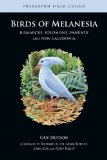
by Guy Dutson
The definitive field guide to the birds of these little known, but fascinating, islands.
March 12, 2012
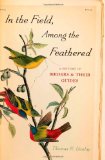
by Thomas R. Dunlap
A history of North American field guides and other bird books.